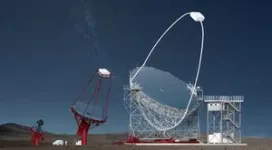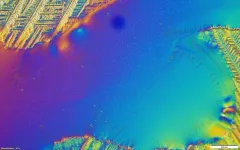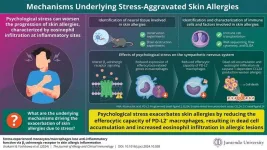Bologna, Italy, 7 January 2025 – On January 7, 2025, the European Commission established the Cherenkov Telescope Array Observatory (CTAO) as a European Research Infrastructure Consortium (ERIC), furthering its mission to become the world’s largest and most powerful observatory for gamma-ray astronomy. The creation of the CTAO ERIC will enable the Observatory's construction to advance rapidly and provide a framework for distributing its data worldwide, significantly accelerating its progress toward scientific discovery.
“The ERIC will streamline the construction and operation of the Observatory in a way that will undoubtedly help the CTAO attract new talent and investment as it continues to grow,” stated Dr. Aldo Covello, Chair of the Board of Governmental Representatives (BGR). “The ERIC status provides the CTAO with the legal stability and administrative advantages it needs to be sustainable in its worldwide operations and impact.”
The CTAO ERIC was established with the international support of 11 countries and one intergovernmental organisation that contribute to the technological development, construction and operation of the Observatory. The BGR represents this group and has been responsible for the preparation of the ERIC.
“We are grateful to our founding members for their support and to the European Commission for reaffirming their confidence in the CTAO as a world-class research infrastructure,” said Dr. Stuart McMuldroch, CTAO Managing Director. “This milestone represents the culmination of years of dedicated planning by the diverse teams contributing to the success of the Observatory. With the CTAO ERIC, we now have a powerful instrument to consolidate our efforts and drive the project forward.”
The ERIC not only provides the Central Organisation with a formal framework to accept and operate the current telescope prototypes, but it also allows for the immediate start of construction for the full array of more than 60 telescopes across both telescope sites in Spain and Chile. On the CTAO-North site, where the Large-Sized Telescope prototype (LST-1) is under commissioning, three additional LSTs and one Medium-Sized Telescope (MST) are expected to be built in the next 1-2 years. Meanwhile, on the CTAO-South site, the first five Small-Sized Telescopes (SSTs) and two MSTs are expected to be delivered by early 2026. Thus, with the aid of the ERIC, the Observatory is expected to be able to operate intermediate array configurations as early as 2026. These sub-sets of the final arrays will already be more sensitive than any existing instrument, bringing the Observatory’s early science within reach.
The impact of the ERIC will extend beyond hardware, influencing several other key areas. In the coming months, the Observatory will prepare to integrate and operate advanced software designed to control the telescopes and their supporting devices on-site, as well as to manage data processing. Additionally, the ongoing recruitment campaign will continue across all CTAO facilities, including the CTAO Headquarters in Italy and the CTAO Science Data Management Centre in Germany, ensuring robust support for these developments.
The CTAO was promoted to a “Landmark” on the European Forum on Research Infrastructure (ESFRI) Roadmap 2018 and was ranked as the main priority among the new ground-based infrastructures in the ASTRONET Roadmap 2022-2035. Now, after years of extensive preparatory work, and with the final legal entity in place, the CTAO solidifies its standing in the global research community, facilitating synergies with other international organisations and observatories.
“The ERIC status strengthens the presence of the CTAO in Europe and its role as a key player in the European Research Area, but the support we have received and the scope of the CTAO ERIC’s influence goes far beyond European borders," explained Prof. Federico Ferrini, co-Managing Director. “To build and operate the world’s largest gamma-ray observatory that serves the ambitious needs of the global scientific community, we are counting on an increasing number of partners from around the world.”
The CTAO ERIC Members are Austria, Czech Republic, European Southern Observatory (ESO), France, Germany, Italy, Poland, Slovenia and Spain. Additionally, Switzerland is an Observer, Japan is a Strategic Partner and Australia is a Third Party.
About the CTAO
The CTAO (Cherenkov Telescope Array Observatory; www.ctao.org) will be the world’s largest and most powerful observatory for gamma-ray astronomy. The CTAO’s unparalleled accuracy and broad energy range (20 GeV- 300 TeV) will help to address some of the most perplexing questions in astrophysics, falling under three major themes: understanding the origin and role of relativistic cosmic particles; probing extreme environments, such as black holes or neutron stars; and exploring frontiers in physics, searching for dark matter or deviations from Einstein’s theory of relativity. Additionally, the CTAO will play a key role in both multi-wavelength and multi-messenger fields in the coming decades thanks to its enhanced performance, which will allow it to provide fundamental gamma-ray information in the quest to probe the most extreme scenarios.
To cover its broad energy range, the CTAO will use three types of telescopes: the Large-Sized Telescopes (LST), the Medium-Sized Telescopes (MST) and the Small-Sized Telescopes (SST). More than 60 telescopes will be distributed between two telescope array sites: CTAO-North in the northern hemisphere at the Instituto de Astrofísica de Canarias’ (IAC’s) Roque de los Muchachos Observatory on La Palma (Spain), and CTAO-South in the southern hemisphere at the European Southern Observatory’s (ESO’s) Paranal Observatory in the Atacama Desert (Chile). The Headquarters of the CTAO is hosted by the Istituto Nazionale di Astrofisica (INAF) in Bologna (Italy), and the Science Data Management Centre (SDMC) is hosted by the Deutsches Elektronen-Synchrotron DESY in Zeuthen (Germany).
The CTAO is a Big Data project. The Observatory will generate hundreds of petabytes (PB) of data in a year (~3 PB after compression). Based on its commitment to Open Science, the CTAO will be the first gamma-ray observatory of its kind to operate as an open, proposal-driven observatory providing public access to its high-level science data and software products.
The CTAO Central Organisation (legally, the CTAO ERIC) is in charge of the construction and operations of the Observatory. This group works in close cooperation with partners from around the world toward the development of the Observatory. Major partners include In-Kind Contribution Collaborations that are developing essential hardware and software, in addition to the CTAO Consortium, an international group of researchers who works in the scientific exploitation of the Observatory.
About the ERIC
The European Research Infrastructure Consortium (ERIC) is a specific legal form under EU law that facilitates the establishment and operation of Research Infrastructures with a European interest. A European Commission decision is required to set up a new ERIC. The CTAO is the 29th ERIC created since 2009 and proves that the ERIC legal instrument facilitates pan-European and international scientific collaboration.
The members of an ERIC are EU Member States, associated countries within the EU framework programme for research and innovation and, under certain conditions, other non-EU countries and intergovernmental organisations.
Contact
For further information and interview inquiries (both in person and online), please contact:
Dr. Alba Fernández-Barral
CTAO Chief Communications Officer
alba.fernandezbarral@cta-observatory.org
+39-051-6357-270
(English, Spanish and Italian)
END








